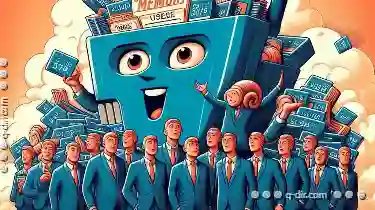It is essential to understand how some seemingly outdated features like favorites or shortcuts are still crucial in managing our digital life efficiently. ...
 This blog post aims to explore why these favorite icons have managed to stay relevant despite the rapid changes in technology and design trends. In today’s digital age, navigating through an ocean of applications can be a daunting task.
This blog post aims to explore why these favorite icons have managed to stay relevant despite the rapid changes in technology and design trends. In today’s digital age, navigating through an ocean of applications can be a daunting task.1. The Evolution of Navigation: From Favorites to Smart Shortcuts
2. The Role of Favorites in Modern Navigation: An Old Dog with New Tricks
3. The Future of Favorites: Integration with AI and Personalization
4. Conclusion: Why Favorites Are Both Outdated and Essential
1.) The Evolution of Navigation: From Favorites to Smart Shortcuts
The Past: In the early days of computing, navigation was straightforward. Users had limited software options which made it easier for them to remember where each application or file was stored on their device. These were typically accessed through a simple "favorites" bar or folder structure that users could quickly navigate through by clicking directly on icons.
The Present: As technology evolved, operating systems and applications became more complex with numerous features, settings, and files. This complexity demanded a more sophisticated navigation system which led to the integration of smart shortcuts within apps like iOS's "recently used" list or Android's app drawer with intelligent sorting algorithms based on usage frequency.
2.) The Role of Favorites in Modern Navigation: An Old Dog with New Tricks
1. Convenience: While modern navigation systems are dynamic and efficient, favorites offer a quick and easy way to access frequently used apps or files without going through the entire menu structure every time. This is particularly useful on smartphones where screen space is limited and multitasking is common.
2. Efficiency: For tasks that require repeated use (like launching a browser to check email, opening a specific photo editing app for minor edits, etc.), favorites significantly reduce the time spent searching for an app or file. This efficiency is crucial in our fast-paced lives where every minute counts.
3. Organization: Even with advanced navigation tools like search bars and AI algorithms, favorites provide a visual representation of what’s important to you. This helps users quickly assess what they use most often and adjust their usage as needed without delving deep into the app structure or settings.
4. Legacy Users: For those who are used to traditional methods (like older generations still relying on physical desktop shortcuts), favorites provide a familiar interface that doesn’t require learning new skills, making it easier for them to adapt and continue using technology comfortably.
3.) The Future of Favorites: Integration with AI and Personalization
As artificial intelligence continues to advance, we can expect smart navigation tools like favorites to become even more personalized. Features might include dynamic sorting based on user behavior and preferences over time, real-time updates reflecting the most used apps or files in your digital ecosystem, and integration with voice assistants for hands-free access. This evolution will ensure that favorites remain both practical and appealing as technology progresses.
4.) Conclusion: Why Favorites Are Both Outdated and Essential
Despite being a relic of older navigation systems, favorites have managed to adapt and stay relevant by focusing on their core strengths - convenience, efficiency, and personalization. As we move forward into an AI-driven future where data usage is optimized for both users and developers, the role of favorites might change but not diminish in importance. They represent a tried-and-true method that can be enhanced with new technology to provide better user experiences without reinventing the wheel every few years.
In conclusion, while it’s essential to look towards innovative solutions and design trends for future navigation systems, there's no denying the practicality of favorites in our daily digital routines. They might not be as dynamic or sophisticated as some other features, but they serve a purpose that is uniquely theirs - providing easy access to what matters most without overwhelming users with complexity. As such, understanding how and why favorites are both outdated and essential can help us appreciate their role in shaping the future of navigation technology.

The Autor: / 0 2025-02-19
Read also!
Page-

Why Tabbed Interfaces' "Memory Usage" Is Often Misleading.
These tabs are designed to help users manage multiple tasks or windows efficiently by allowing them to switch between different sections of an ...read more
Icon View: The UI That Prioritizes Aesthetics Over Content
This visual paradigm prioritizes aesthetics over content, creating a visually striking and often minimalist experience for users. In this blog post, ...read more

Details View: For Uninterrupted Data Work
A well-designed **Details View** can significantly improve productivity by providing users with a clear, organized, and interactive interface to ...read more